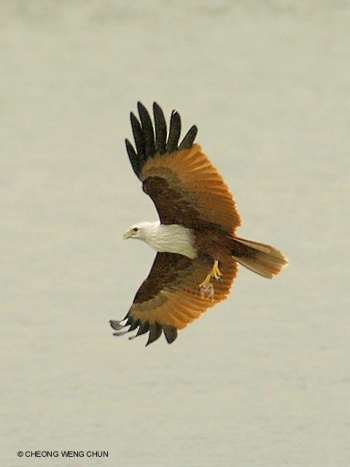(Video link. Reference updated) |
Aloktewari (talk | contribs) (Ssp. ''indus'' image added) |
||
| Line 13: | Line 13: | ||
Breeds in much of [[India]] and [[Sri Lanka]] and in mainly coastal areas from [[Burma]] and southern [[China]] south to [[Malaya]] and from the [[Philippines]], [[Borneo]] and [[Sumatra]] east to [[New Guinea]], the [[Bismarck Archipelago]] and [[Solomon Islands]], and [[Australia]]. In Australia a northern coastal species found from about Shark Bay in [[Western Australia]] to central [[New South Wales]]. | Breeds in much of [[India]] and [[Sri Lanka]] and in mainly coastal areas from [[Burma]] and southern [[China]] south to [[Malaya]] and from the [[Philippines]], [[Borneo]] and [[Sumatra]] east to [[New Guinea]], the [[Bismarck Archipelago]] and [[Solomon Islands]], and [[Australia]]. In Australia a northern coastal species found from about Shark Bay in [[Western Australia]] to central [[New South Wales]]. | ||
[[Image:Brahminy_Kite.jpg|thumb|350px|right|Photo by {{user|wengchun|Weng Chun}}<br />[[Kuala Gula Bird Sanctuary]], [[Malaysia]], October 2004]] | [[Image:Brahminy_Kite.jpg|thumb|350px|right|Photo by {{user|wengchun|Weng Chun}}<br />[[Kuala Gula Bird Sanctuary]], [[Malaysia]], October 2004]] | ||
| + | [[Image:brahminy_kite_alok.JPG|thumb|350px|right|Ssp. ''indus''<br />Photo by {{user|aloktewari|Alok Tewari}}<br />Gohana, Dist. Sonipat, Haryana, [[India]], Jan-2017]] | ||
Resident. | Resident. | ||
==Taxonomy== | ==Taxonomy== | ||
Revision as of 11:46, 15 January 2017
- Haliastur indus
Identification
43-51cm
- Chestnut
- White head and breast
- Black wing tips
- Yellow feet
Juveniles are browner
Distribution
Breeds in much of India and Sri Lanka and in mainly coastal areas from Burma and southern China south to Malaya and from the Philippines, Borneo and Sumatra east to New Guinea, the Bismarck Archipelago and Solomon Islands, and Australia. In Australia a northern coastal species found from about Shark Bay in Western Australia to central New South Wales.
Resident.
Taxonomy
Subspecies
Four subspecies are recognised[1]:
nominate race breeds from India to China and Indochina
intermedius in Malaysia, the Philippines and Indonesia
girrenera in Australia, New Guinea and the Bismarck Archipelago
flavirostris in the Solomon Islands
Habitat
Coastal mudflats, islands, estuaries and mangroves up to 2,300m. In some areas common in coastal towns.
Behaviour
Breeding
It nests in mangrove trees, close to water. The nest is made of twigs and sticks, usually lined with dried mud. The 2 white eggs have scattered red-brown blotches. Both adults care for the young.
Diet
The diet includes frogs, small snakes, crabs, insects and fish. It also scavenges.
Vocalisation
Call: a mewing keeyew, kweeaa or kyeeer.
References
- Clements, JF. 2011. The Clements Checklist of Birds of the World. 6th ed., with updates to August 2011. Ithaca: Cornell Univ. Press. ISBN 978-0801445019. Spreadsheet available at http://www.birds.cornell.edu/clementschecklist/downloadable-clements-checklist
- naturia
Recommended Citation
- BirdForum Opus contributors. (2024) Brahminy Kite. In: BirdForum, the forum for wild birds and birding. Retrieved 25 April 2024 from https://www.birdforum.net/opus/Brahminy_Kite
External Links







